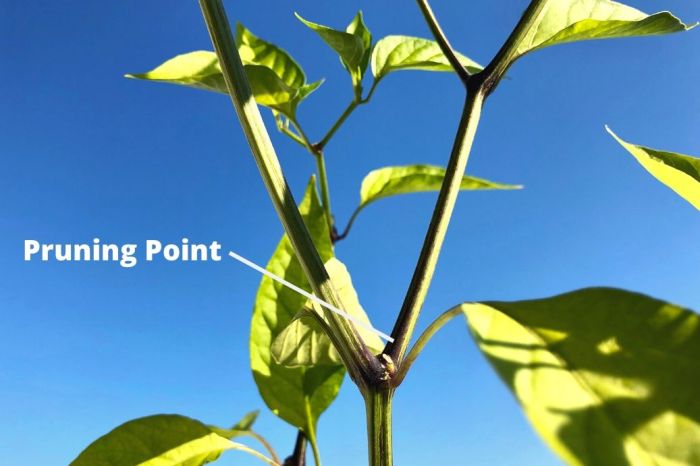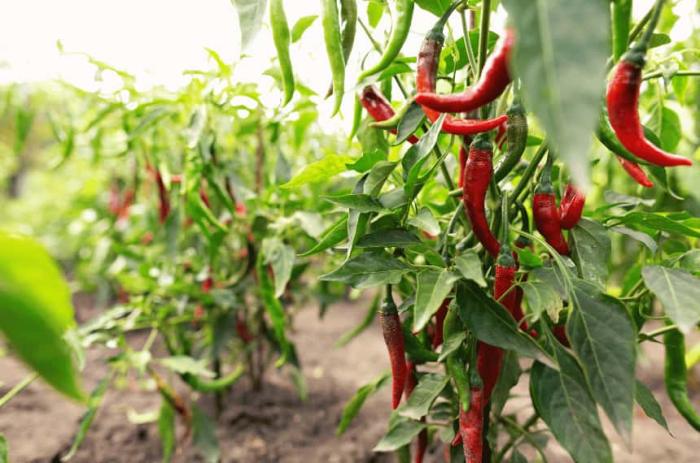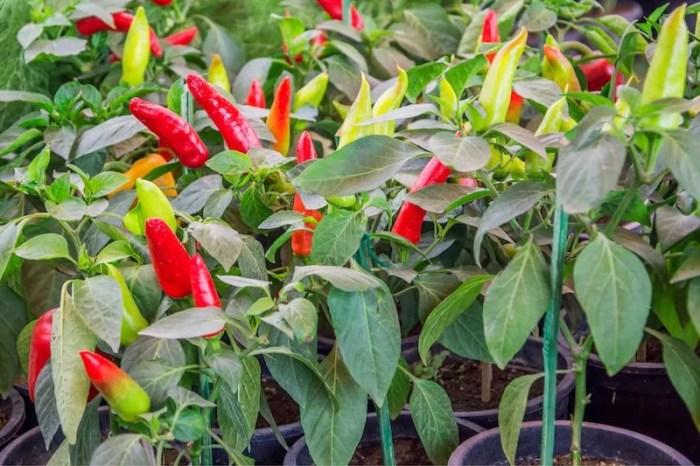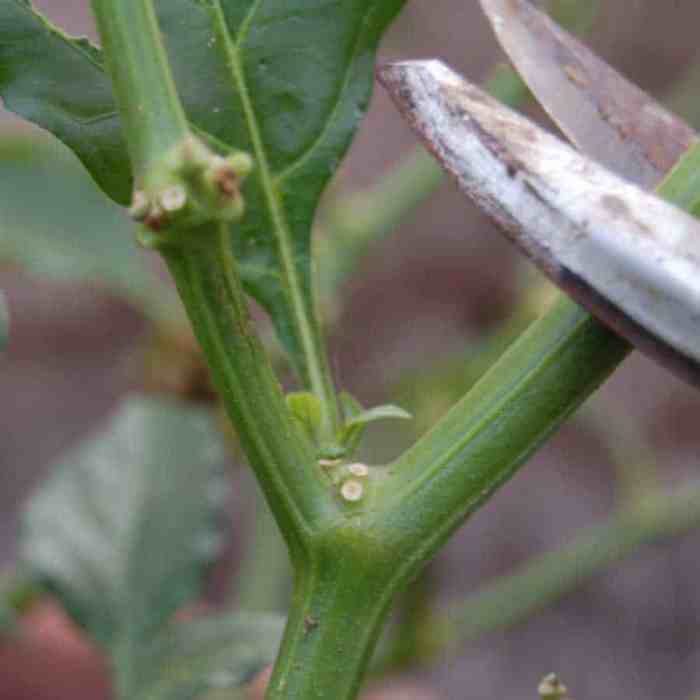How to trim chilli plants – Master the art of trimming chilli plants and unlock the secrets to bountiful harvests, robust plant health, and a shield against common diseases. Discover the optimal timing, techniques, and aftercare practices that will transform your chilli plants into thriving specimens.
Benefits of Trimming Chilli Plants

Regularly trimming chilli plants offers numerous advantages that enhance their growth and productivity. These benefits include:
Increased Yield
Trimming promotes bushier growth, resulting in more branches and fruiting sites. This leads to a substantial increase in chilli pepper production, maximizing the plant’s yield potential.
Regular trimming encourages healthy growth and productivity in chilli plants. To trim, simply snip off any dead, diseased, or yellowing leaves. For larger plants, you may also need to remove some of the older stems to encourage new growth. If you’re looking for a more detailed guide on removing plants, check out our article on how to remove yucca plant . Returning to our chilli plants, remember to trim regularly to keep them healthy and productive.
Improved Plant Health
Trimming removes weak, diseased, or unproductive stems and leaves, allowing the plant to focus its energy on healthy growth. This strengthens the plant’s overall vigor and resistance to pests and diseases.
Reduced Risk of Disease
Trimming helps prevent the spread of fungal diseases like powdery mildew and leaf spot, which can severely impact chilli plant health and yield. By removing infected leaves and stems, the risk of disease transmission is minimized.
When to Trim Chilli Plants

The optimal time to trim chilli plants is during their vegetative growth stage, which occurs before flowering and fruit production. Trimming at this stage encourages bushier growth and a stronger root system, leading to increased yields.
Signs that indicate the plant needs trimming include:
Leggy Growth
- Excessive stem growth with minimal branching
- Weak stems that easily bend or break
Overcrowding
- Dense foliage that blocks sunlight from reaching lower leaves
- Reduced airflow, increasing the risk of disease
Seasonal Considerations
- Trim in early spring or late summer for plants grown in temperate climates
- Avoid trimming during extreme heat or cold, as plants are more vulnerable to stress
How to Trim Chilli Plants
Tools and Techniques, How to trim chilli plants
Tools:
- Sharp, clean shears or pruners
- Gloves (optional)
Techniques:
-
-*Pinching
Gently pinch off new growth at the tips of stems to encourage branching and bushier growth.
-*Cutting
Use shears to remove larger stems or branches that are overcrowding or diseased.
-*Suckering
Remove small, unproductive shoots that grow from the base of the plant.
Steps for Trimming Chilli Plants
1.
-
-*Remove Dead or Diseased Foliage
Cut off any leaves or stems that are yellowed, wilted, or showing signs of disease.
- 2.
- 3.
- 4.
- 5.
- 6.
-*Pinch Tips of Stems
When trimming chilli plants, remove any dead or diseased leaves, as well as any suckers that may be growing from the base of the plant. You can also prune back any branches that are too long or that are crossing over other branches.
For more detailed instructions on how to trim rubber plants, visit this guide . After trimming, water the chilli plants well and fertilize them according to the package directions.
Pinch off the growing tips of new shoots to promote branching and lateral growth.
-*Remove Overcrowding Branches
Trimming chilli plants involves removing unwanted stems and leaves to promote healthy growth and fruiting. Similar principles apply to trimming other plants, as detailed in the comprehensive guide how to trim the plants . By understanding these techniques, you can effectively maintain chilli plants and optimize their yield.
Identify and cut off any branches that are crossing or rubbing against each other.
-*Suckering
Remove any small shoots that are growing from the base of the plant, as they can divert energy from the main stem.
-*Shape the Plant
Trim the plant into a desired shape, such as a bush or a vine, by removing excess branches or shoots.
-*Sterilize Tools
After trimming, sterilize your tools with a disinfectant to prevent the spread of disease.
Aftercare for Trimmed Chilli Plants
After trimming chilli plants, it is crucial to provide proper care to promote healthy regrowth and prevent shock. This involves a combination of watering, fertilizing, and pest control.
Watering
Trimmed chilli plants require consistent watering to maintain moisture levels. Avoid overwatering, as this can lead to root rot. Instead, water the plants when the soil feels dry to the touch.
Fertilizing
After trimming, chilli plants benefit from a boost of nutrients to support regrowth. Apply a balanced fertilizer, such as a 10-10-10 formula, every 2-3 weeks. Follow the instructions on the fertilizer label carefully to avoid over-fertilizing.
Pest Control
Trimmed chilli plants can be vulnerable to pests, such as aphids and spider mites. Monitor the plants regularly for any signs of infestation and take prompt action to prevent further damage. Use organic pest control methods, such as insecticidal soap or neem oil, to eliminate pests without harming the plants.
Additional Tips for Trimming Chilli Plants

Trimming chilli plants requires careful attention to detail to ensure optimal growth and yield. Here are some additional tips to consider:
Using Sharp Tools
Sharp, clean tools are essential for precise trimming. Dull tools can crush or tear plant tissues, inviting disease and pests. Use sharp pruning shears or a sharp knife for the best results.
Sterilizing Equipment
To prevent the spread of disease, sterilize your tools before and after use. Dip them in a solution of 10% bleach or rubbing alcohol for a few minutes, then rinse thoroughly with clean water.
Consider Plant Variety
Different chilli plant varieties have different growth habits and pruning requirements. Research the specific needs of your variety to determine the best trimming techniques.
Troubleshooting Common Problems
During trimming, you may encounter common problems such as:
- Over-trimming:Avoid removing too much foliage, as this can weaken the plant and reduce yields.
- Cutting into woody stems:If you encounter woody stems, use a sharp knife or pruning saw to make clean cuts.
- Disease or pest infestation:If you notice any signs of disease or pests, isolate the affected plant and trim away the infected areas.
Ultimate Conclusion: How To Trim Chilli Plants

By following the expert guidance provided in this comprehensive guide, you’ll be equipped to trim your chilli plants with precision, ensuring their continued vitality and maximizing your chilli-growing success.
Helpful Answers
Why is trimming chilli plants important?
Trimming removes excess growth, promotes airflow, and reduces the risk of diseases that thrive in dense foliage.
When should I trim my chilli plants?
Trim when the plants are young and actively growing, typically during the early to mid-season.
What tools do I need for trimming?
Sharp pruning shears or a sterilized knife are essential for precise and clean cuts.
How do I prevent shock after trimming?
Water the plants deeply before and after trimming, and avoid over-pruning to minimize stress.